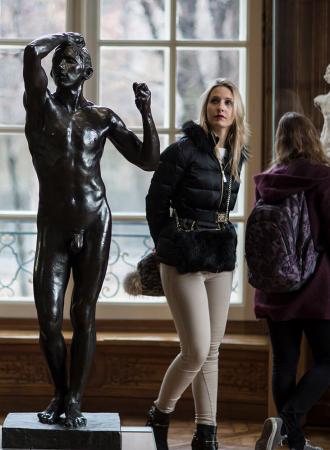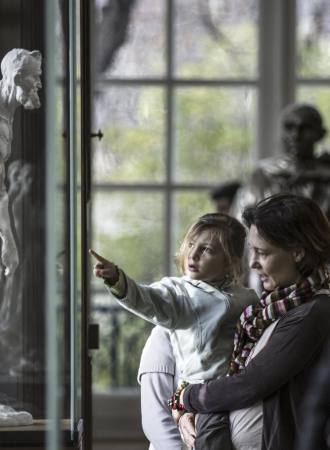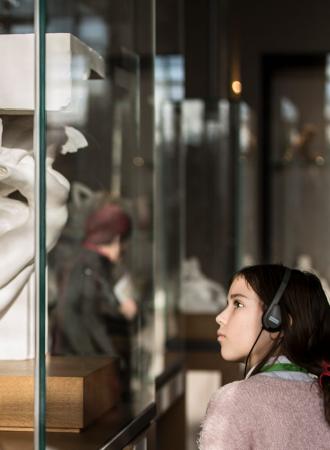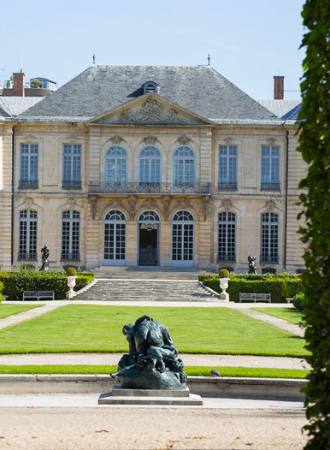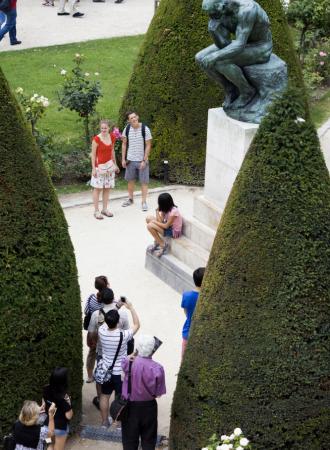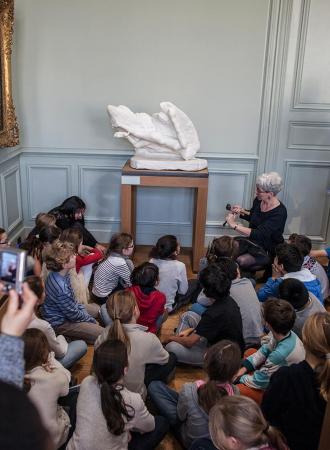Search the site
Hôtel Biron
Vue de l'oeuvre
The Musée National Auguste Rodin, an exceptional location in Paris
The collections of the greatest French sculptor are presented in an eighteenth-century mansion standing at the heart of a French-style garden. Rodin’s donation to the French State in 1916 made it possible to create the Musée Rodin here in 1916, and the museum is now one of the most visited in Paris. The splendor of the setting and the beauty of Rodin’s art combine in an extraordinary harmony that makes the Musée Rodin a haven of peace at the heart of the French capital... to discover it is to love it!
A SITE CHOSEN BY THE ARTIST
Rodin’s museum has the distinctive feature of occupying a location chosen by the artist himself. The Hôtel Biron, a delightful rococo mansion designed by the architect Jean Aubert and built in 1732, was practically abandoned when Rodin discovered it in 1908. He began by renting four ground-floor rooms before taking over the whole building from 1911 onwards, thereby laying the foundations for what would become the Musée Rodin on August 4, 1919.
SCULPTURES BATHED IN NATURAL LIGHT
The works on display in the museum are bathed in the natural light that enters through the large bay windows overlooking the garden. The impression changes from one season to the next and the play of natural light illuminates the sculptures differently according to the time of day.
AN OVERVIEW OF RODIN'S WORK IN 18 ROOMS
The visit begins in the Cantor Hall, which features a monumental staircase. It continues with eighteen rooms displaying clay sketches, plaster casts and bronze and marble sculptures that illustrate Rodin’s constant artistic evolution. The underlying themes are his creative process and the genesis of his works.
After the first three rooms dedicated to the artist’s early career, The Age of Bronze is showcased in a rotunda―one of the museum’s most beautiful rooms, decorated with eighteenth-century wood trim, where the play of reflections in the antique mirrors and on the pale parquet floors adds an extra touch of poetry. The visit continues with the famously sensual white marble sculpture The Kiss. The view from the first floor windows of the bronze sculptures down below gives visitors a foretaste of what awaits them in the sculpture garden, home to the famous Thinker. Room 16 displays works by Camille Claudel, recalling the importance of the ties between the two artists. In the last room, The Walking Man―which earned Rodin his reputation as the first of the “moderns”―stands among the artist’s personal collection of antiquities.
